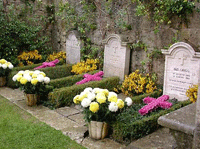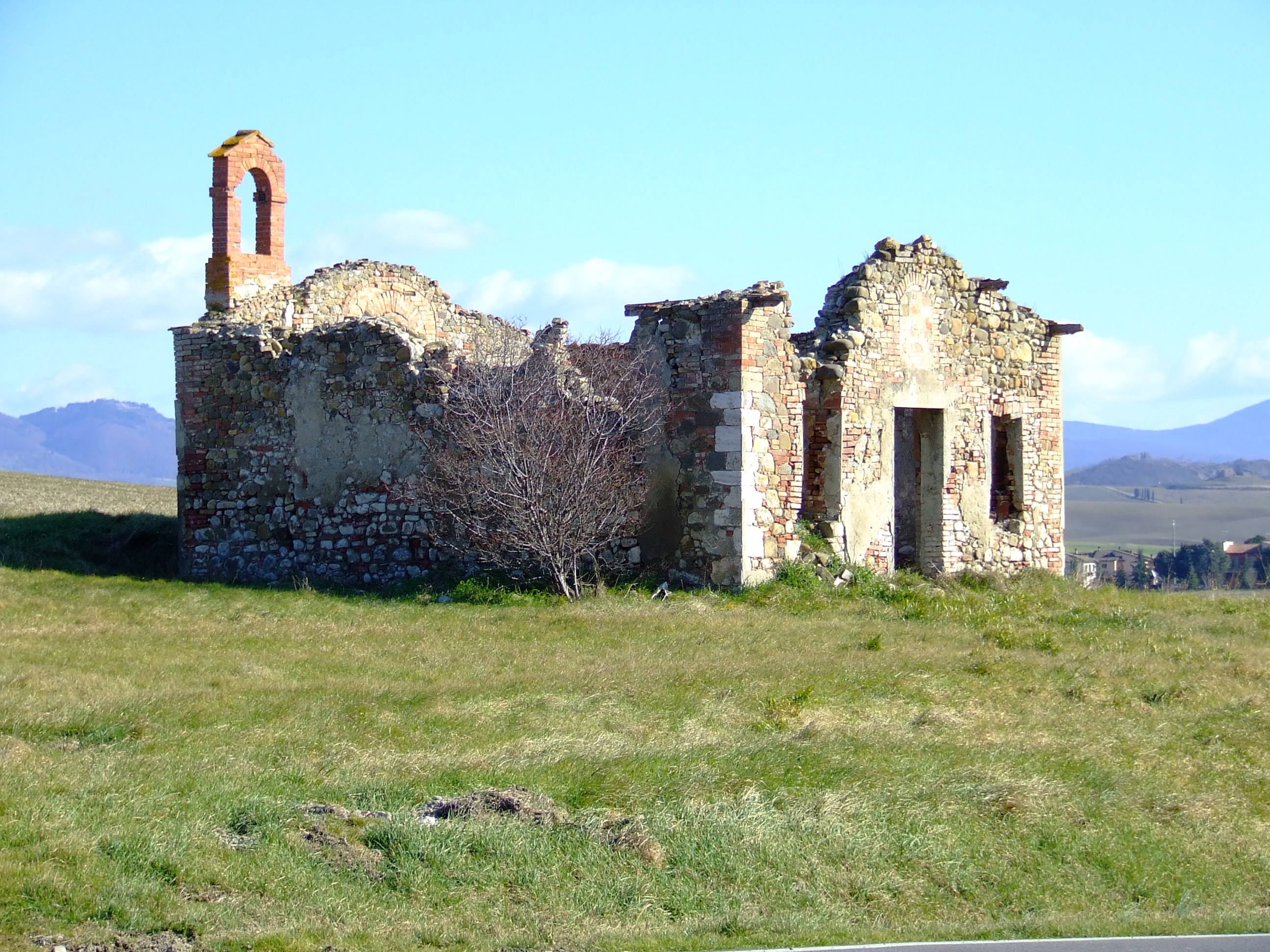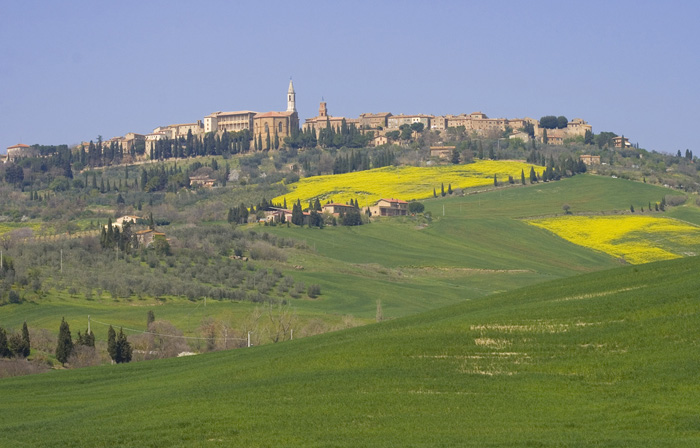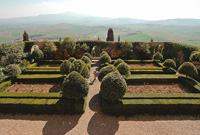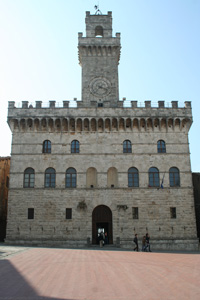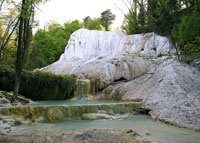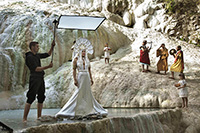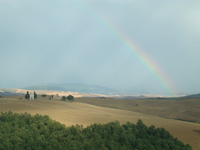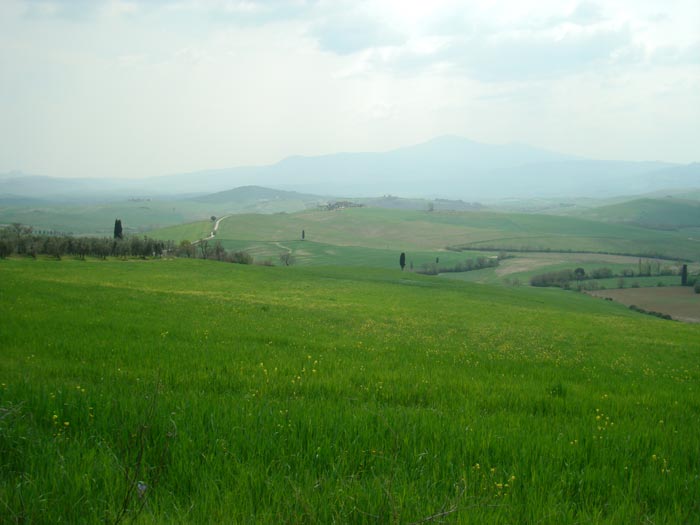 |
|
Val d'Orcia, between Pienza and Bagno Vignoni |
|
Val d'Orcia |
One of the best places to slow travel in Tuscany is the Val d’Orcia, with its exquisite art, museums and churches in small hillside villages, its cuisine and epic countryside. We suggest a panoramic tour of the valley, so that the trip becomes a unique experience among the colors and atmospheres of this unique Tuscan landscape. The landscape of the Val d’Orcia was celebrated by painters from the Siennese School, which flourished during the Renaissance. Images of the Val d’Orcia, and particularly depictions of landscapes where people are depicted as living in harmony with nature, have come to be seen as icons of the Renaissance and have profoundly influenced the development of landscape thinking.
|
||
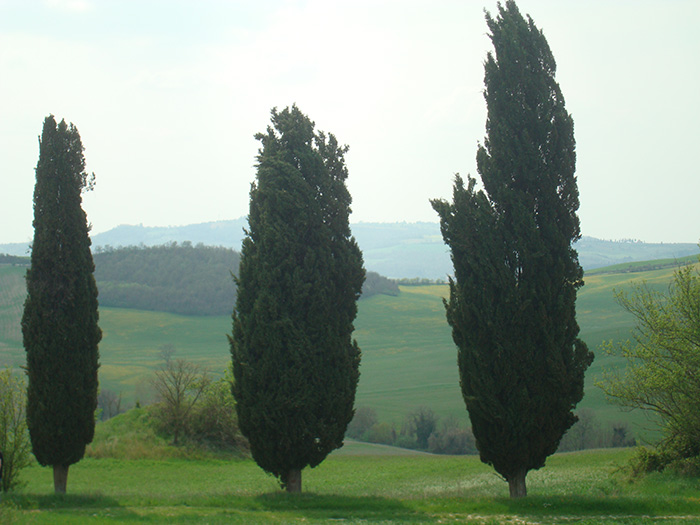 |
||
Cypress trees in the Val d'Orcia
|
||
Val d'Orcia is an exceptional reflection of the way the landscape was rewritten in Renaissance times to reflect the ideals of good governance and to create an aesthetically pleasing picture. It lies to the south-east of Siena, its northern boundary approximately 25 km from the city centre. The landscape reflects colonization by the merchants of Siena in the 14th and 15th centuries. They aimed to create a landscape of efficient agricultural units but also one that was pleasing to the eye. The landscape that resulted was one of careful and conscious planning and design and led to the beginning of the concept of 'landscape' as a man-made creation. The landscape was thus created to be efficient, functional, equitable and aesthetically pleasing. It was based on innovative tenure systems whereby the estates owned by merchants were divided into small properties and cultivated by families who lived on the land. Half of the produce was paid to the merchants as rent - sufficient to allow the merchants to reinvest in further agricultural improvements. The farms were mixed farms cultivating grain, vines, olives, fruit and vegetables and with hay meadows and pastures for livestock interspersed between the farms. Farmers practised transhumance with routes to Meremma and l'Amiata. An illustration of the aim for the farming landscape to create pleasing pictures is the persistent tradition of planting roses to embellish vineyards. Cypresses form a striking addition to the landscape planted along routes and around settlements, their regular form punctuating the rounded shapes of the hills and their dark colour contrasting strikingly with the pale landscape. |
||
Walking in the Val d'Orcia | Itineraries
|
||
The Val d'Orcia is natural setting of extraordinary beauty. It has become known all over the world as the classic Tuscan landscape. Important films like the Oscar winners The English Patient, La Vita è Bella and Gladiator were shot here, as well as Romeo and Juliet directed by Franco Zeffirelli, and most recently Under the Tuscan Sun, cementing the Val D’Orcia’s beauty in cinematic history. Ultimately, Shadow Dancer by the American writer/director Brad Mirman was filmed over the course of six weeks in the splendid farmland among Radicofani, Castiglion d'Orcia, San Quirico and Abbadia San Salvatore.
|
||
Villa La Foce |
||
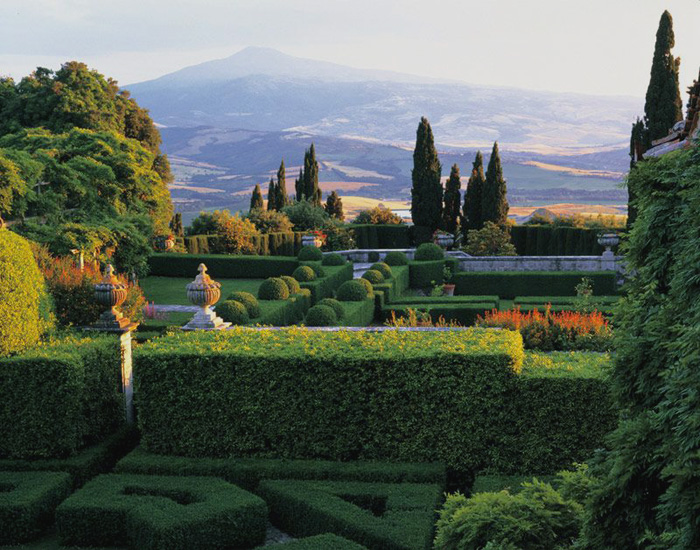 |
||
A view across the garden and the Val d'Orcia, towards a horizon dominated by the volcanic peak of Monte Amiata |
||
| La Foce lies on the hills overlooking the Val d’Orcia, between Monticchiello and Chianciano Terme. Iris Origo's La Foce is the last, and in many ways the best, of the Anglo-Florentine villas. Created by an Anglo-American married to an Italian, it engaged with the land and the people of Tuscany in a way that few had done before; it also adapted to the changing economic and social conditions which ultimately destroyed the Anglo-Florentine community. From Etruscan times (a burial-place dating from the 7th century BC to the 2nd AD has been recently excavated on the property), the settlement of La Foce has been continuously inhabited for many centuries. In medieval times, ts strategic position on the historical Via Francigena leading to Rome greatly increased its significance. The Villa itself (now available for rent) was built in the late 15th century as a hostel for pilgrims and merchants traveling on this busy road. In 1924 the clay-covered hills were bought by Antonio and Iris Origo, who dedicated their lives to bringing progress and social change to the then poverty-ridden area, building a profitable farm on the enormous property. Today the estate – a combination of woods, cultivated fields and olive groves – is run by the Origo daughters, Benedetta and Donata. The garden, is an ideal combination between the landscape and 20th century architecture, blending Italian and English traditions and taste. |
||
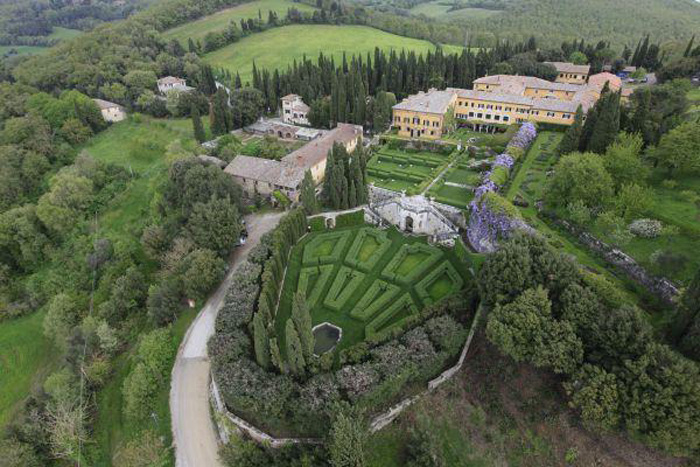 |
||
Villa La Foce estate |
||
The Origos engaged an English architect, Cecil Pinsent, who had previously done extensive work on Bernard Berenson’s Villa I Tatti in Florence, to restructure the main buildings and create a large garden at La Foce. The vast garden was conceived to enhance the Renaissance house and expand the spectacular view over the valley of the Orcia and the Amiata mountain. The harmony between buildings, garden and nature makes La Foce an ideal example of Tuscany’s architectural and cultural evolution.
|
||
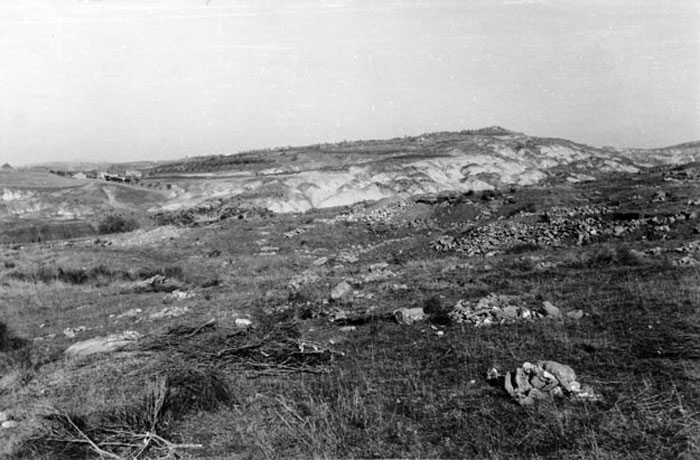 |
||
"The Val d'Orcia itself, with its uncannily lunar crete senesi (clay-earth hillocks), had long become barren; prey to soil erosion, antiquated farming practices, rampant deforestation and social strife." |
||
| La Foce was a farm-estate of roughly 7,000 hectares (“a place with enough work for our lifetime”, as Iris noted). Embedded in the Val d’Orcia, beneath the benign gaze of Monte Amiata – an extinct volcano as well as a site significant to the Etruscans – and with the fortified medieval village of Radicofani standing sentinel on the skyline, the estate had fallen to rack and ruin. The Val d’Orcia itself, with its uncannily lunar crete senesi (clay-earth hillocks), had long become barren; prey to soil erosion, antiquated farming practices, rampant deforestation and social strife. |
||
A forlorn desert of barren clay hills rising from a parched valley, the estate had been mismanaged for centuries. Only a fraction of the land was good, only a fraction of that was cultivated, the forests were neglected and the twenty-five outlying farms were in varying states of disrepair - some were virtually inaccessible while most contained several dozen inhabitants crammed into a few dark, airless rooms. To the south stood the black, basalt cliffs and towering fortress of Radicofani, to the west was the summit of Monte Amiata, an extinct volcano which blocked the sea breezes but did nothing to stop the bitter tramontana wind from the north and the hot dry scirocco from the south.
|
|
|
|
|
||||
 |
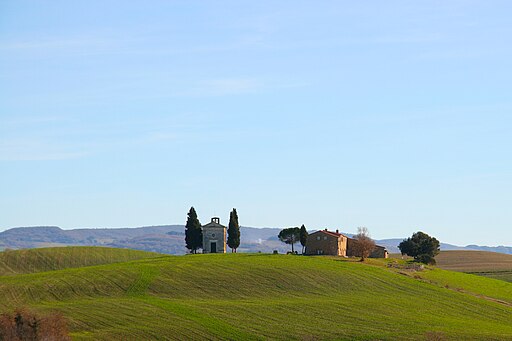 |
|||
Val d'Orcia album
|
Acquedotto del Vivo (Acquedotto di Siena) in Monte Amiata Scalo
|
San Quirico d'Orcia, Cappella della Madonna di Vitaleta
|
||
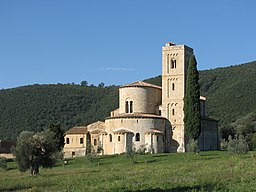 |
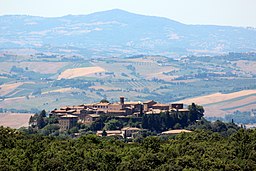 |
|||
Sant'Antimo
|
Sant'Angelo in Colle | Gallina, chiesa di La Scala
|
||
Near La Foce, are the Renaissance and medieval towns of Pienza, Montepulciano, Monticchiello, San Quirico d'Orcia and Montalcino. The countryside abounds in lovely walks among woods and the characteristic crete senesi (clay hills) and famous wines such as the Vino Nobile and Brunello can be tasted in the local cellars.
|
||||
Pienza |
||||
|
||||
Pienza |
||||
Pienza is the 'touchstone' of Renaissance urbanism. |
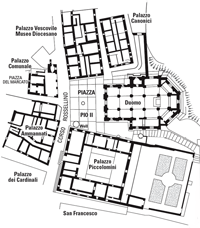 |
|||
| The Piccolomini Palace was built in 1459 by famed architect Bernardo Rossellino. The Piccolomini family lived in the Palazzo until 1962. On the ground floor, the inner courtyard and rooms present the architectural structure; several exhibition stations illustrate Pius II's ambitious humanist project for the ideal city. The first floor is the location of the appartamento nobile where the halls open onto the rooms: the dining room, the music room, the study, the weapons room, the library, and several bedrooms, including that of Enea himself. The piano nobile rooms are furnished with antiques of the period, paintings, objets d?art, and many tokens of a past that still remains intact. The true architectural theme of Palazzo Piccolomini is its relationship with nature and the landscape. From the portico on the rear, unfolds an extraordinary view of the Valdorcia and Monte Amiata. Inserted into this panorama, on the ground floor of the palazzo, a square-shaped garden bound by walls with a well in the middle, is the first hanging garden of the Renaissance. Gardens in Tuscany | The Piccolomini garden in Pienza Architecture in Tuscany | Piazza Pio II |
||||
|
||||
Montepulciano |
||||
| Montepulciano, is built along a narrow limestone ridge and, at 605 m (1,950 ft) above sea level. The city, full of elegant Renaissance palaces, ancient churches, charming squares and hidden corners, boasts vast panoramas all over the wonderful Val d'Orcia and Val di Chiana valleys that surround it. Montepulciano is encircled by walls and fortifications designed by Antonio da Sangallo the Elder in 1511 for Cosimo I. Inside the walls the streets are crammed with Renaissance-style palazzi and churches, but the town is chiefly known for its good local Vino Nobile wines. a long, winding street called the Corso climbs up into the main square, which crowns the summit of the hill. |
||||
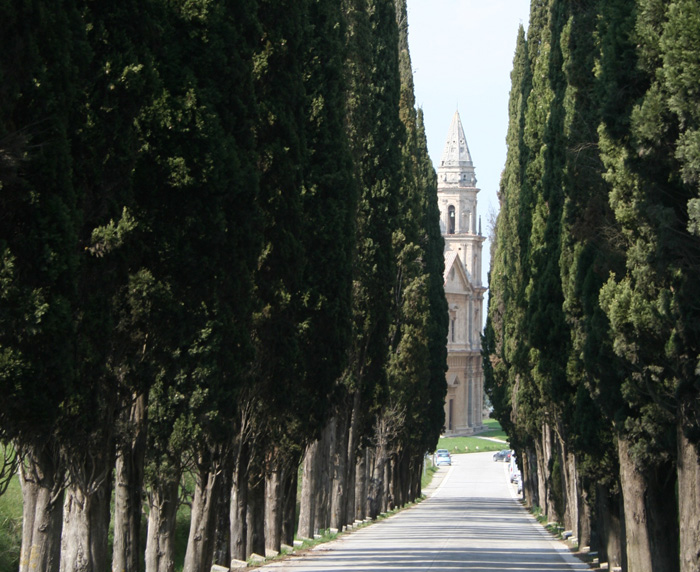 |
||||
Sanctuary of the Madonna di San Biagio, on the road to Chianciano, just outside Montepulciano |
||||
| The main street of Montepulciano stretches for 1.5 kilometers from the Porta al Prato to the Piazza Grande at the top of the hill. The main landmarks include:
* The Palazzo Comunale, designed by Michelozzo in the tradition of the Palazzo della Signoria (Palazzo Vecchio) of Florence. |
||||
Montalcino |
||||
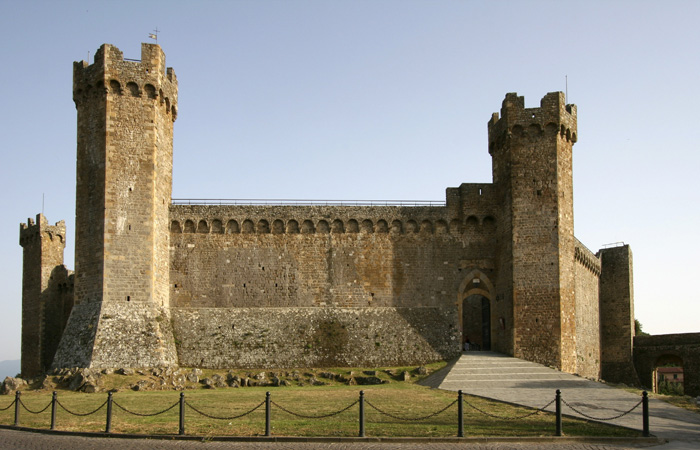 |
||||
The picturesque fourteenth-century Fortress of Montalcino |
||||
| The town is located to the west of Pienza, close to the Crete Senesi in Val d'Orcia. The hill upon which Montalcino sits has been settled probably since Etruscan times. Its first mention in historical documents in 814 AD suggests there was a church here in the 9th century, most likely built by monks who were associated with the nearby Abbey of Sant'Antimo. The population grew suddenly in the middle of the tenth century when people fleeing the nearby town of Roselle took up residence in the town. The town takes its name from a variety of oak tree that once covered the terrain. The very high site of the town offers stunning views over the Asso, Ombrone and Arbia valleys of Tuscany, dotted with silvery olive orchards, vineyards, fields and villages. The lower slopes of the Montalcino hill itself are dominated by highly productive vines and olive orchards. |
||||
The building adjacent to the church is a one-time convent, but it is now the home of the Musei Riuniti which is both a civic and diocesan museum. The museums hold various works, including a gorgeous wooden crucifix by an unknown artist of the Sienese school, two beautiful 15th century wooden sculptures, including one of an incredibly moving Madonna by an anonymous artist which has become the symbol of Montalcino on the various posters and pubblicity, and several other sculptures in terracotta which appear to be of the Della Robbia school. The collection also includes a St Peter and St Paul by Ambrogio Lorenzetti and a Virgin and Child by Simone Martini. There are also more modern works from the beginning of the 20th century that offset and reflect the older works of art in the artful way they are presented by the curator. |
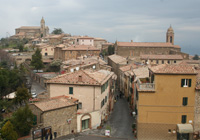 Montalcino, Via Ricasoli |
|||
The Abbey of Sant'Antimo |
||||
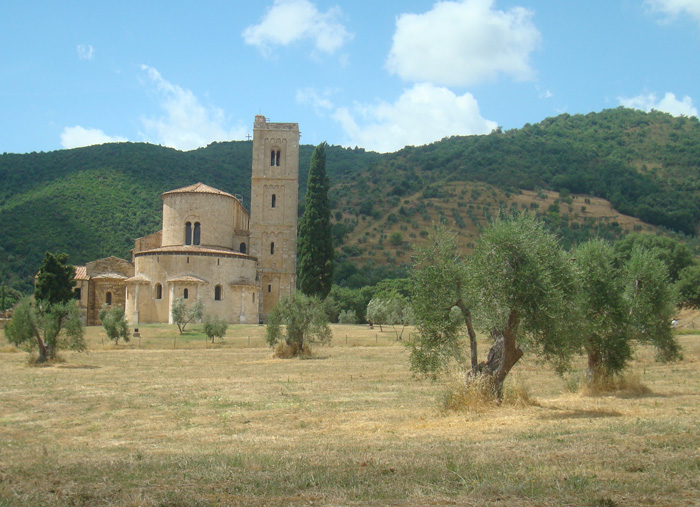 |
||||
The Abbey of Sant'Antimo
|
||||
| The Abbey of Sant'Antimo (Abbazia di Sant'Antimo) is a beautiful Romanesque church, in a picture-perfect setting just south of Montalcino. It sits in a large valley with views of the hill town Castelnuovo dell'Abate, rolling hills covered in olive groves and vineyards, and wild forests. Sant'Antimo is "one of the finest Romanesque religious buildings in Italy." Its name refers to Saint Anthimus of Rome, whose relics were moved here during the late 8th century. The Romanesque church was built during the 12th century, in order to enlarge the preexistant monastery. As such, the actual structure is the result of diverse constructions and modifications executed over the centuries. Gregorian chants are usually sung about 11 a.m. on Sundays. They are also sung every day at 9 a.m and, during vesper services, at 19h on working days and at 18.30h on Sundays. Services and songs are done also in other times of the night and of the day. Visiting hours Weekdays: 10.30 a.m. - 12.30 p.m. / 3.00 - 6.30 p.m. Sundays and Holidays: 9.15 - 10.45 a.m. / 3.00 - 6.00 p.m. |
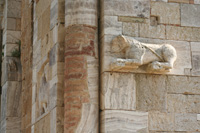 The Abbey of Sant'Antimo was constructed on the site of a Roman villa. In the 4th and 5th centuries the village of Castelnuovo dell'Abate, on the hills nearby, was an important inhabited centre, endowed with a parish. Pieces recycled from the villa were reused in the church and are still visible in the tower. |
|||
San Quirico d'Orcia |
||||
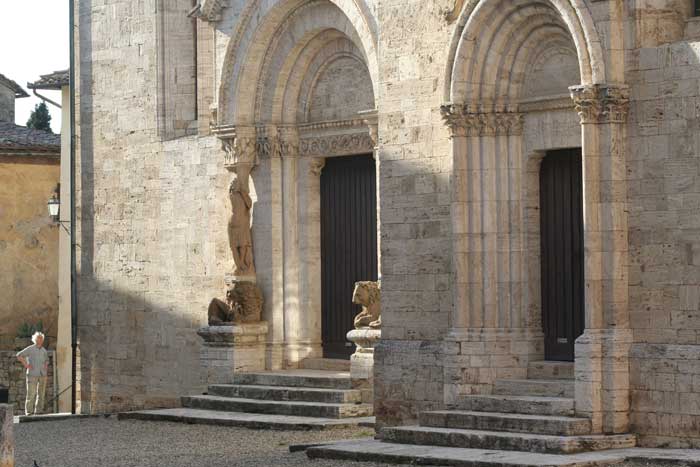 |
||||
San Quirico 'Orcia |
||||
| San Quirico d'Orcia, a small medieval town where you can breathe the history of Tuscany, is a charming town on the northern edge of the Val d'Orcia, on the hills that separate the Val d'Orcia from Val d'Asso. Among the most important monuments are to be mentioned the beautiful Collegiate church of Saints Quirico and Giulitta, built over the ruins of the church of Osenna dating back to the eighth century, with a magnificent Romanesque portal with zoomorphic sculptures and a lintel with the fight between monsters. On the right side there is another Lombardic portal supported by caryatids from the school of Giovanni Pisano. On the back of the collegiate there is Palazzo Chigi, built by Carlo Fontana for the Cardinal Flavio Chigi. Walking down the via Francigena, today called Via Dante Alighieri, you arrive in Piazza della Liberta’ with the church of San Francesco, bearing a Madonna painted by Della Robbia. On the square there is the Porta Nuova, opening to the Horti Leonini, an Italian style garden built by Diomede Leoni in 1540. Continuing you come to the church of Santa Maria Assunta, in Romanesque style with Lombardic influences, with another interesting portal built with material coming from the Abbey of Sant’Antimo. |
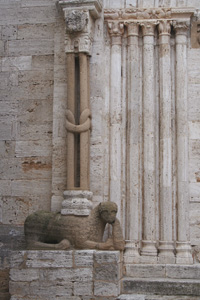 Collegiata dei Santi Quirico e Giulitta, portal Collegiata dei Santi Quirico e Giulitta, portal |
|||
Bagno Vignoni |
||||
| Bagno Vignoni is known since Roman times for the curative properties of its thermal waters. The peculiarity of this village is the lack of a central square, which was replaced by a huge tub in the 16th century, fed directly from the termal source - making Bagno Vignoni a very special place. | ||||
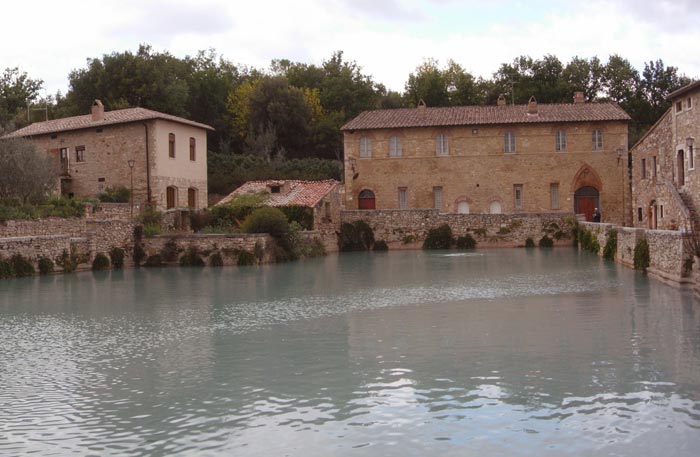 |
||||
Bagno Vignoni |
||||
| The thermal baths, probably well known even in Etruscan times, were definitely enjoyed by the Romans as testified by a plaque located under the arcade of the church of San Caterina, which indicates the consecrating of these waters to the Nymphs. Thanks to their close vicinity to Via Francigena, important thoroughfare which connected northern Europe to the Italic peninsular, these baths became more and more popular during the medieval period. Bagno Vignoni became a halting and refreshment point for the numerous pilgrims who traveled the Via Francigena on their way to Rome, one of the main destinations for the Christian pilgrimages. The thermal waters of Vignoni were used both for personal hygiene and for curing numerous illnesses. For this reason the spa also became a popular resort for famous dignitaries like Pope Pio II Piccolomini and Lorenzo il Magnifico. Bagni di San Filippo In the heart of the Val d’Orcia, San Filippo is characterized by suggestive calcareous sediments made by the hot sulphurous water. San Filippo is only half an hour away from Bagno Vignoni and it has a similar past: the waters of San Filippo were known by Romans, became famous in Middle Ages, treated famous people like Lorenzo il Magnificio and other princes of the Medici family.
The huge oak tree at Le Checche |
||||
The huge oak tree at Le Checche is situated near Pienza along the provincial road no. 53 which goes from Bagno Vignoni to Radicofani, across the Val d'Orcia. The oak tree (Quercus pubescens Willd), is characterized by large, imposing, cross branches; it is 360 years old, it is 20 mt high, with a diametre of 19 mt; the girt of the trunk is of 4,65 mt.
|
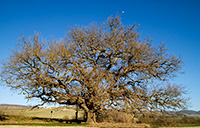 |
|||
Il quercione delle Checche
|
||||
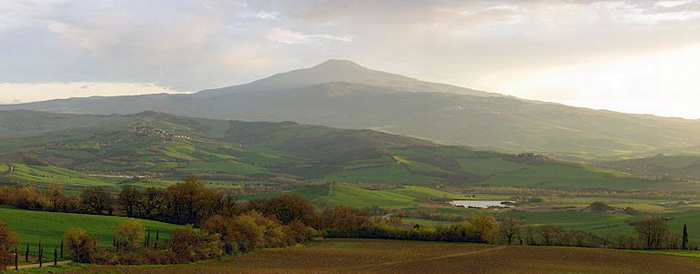 |
||||||||||||||||||||||||||||||||||
Mappa Val d'Orcia | Ingrandire mappa |
||||||||||||||||||||||||||||||||||
|
||||||||||||||||||||||||||||||||||
| From San Quirico d'Orcia to Bagno Vignoni Bagno Vignoni - La Foce Bagno Vignoni - Bagno Vignoni Castiglione d'Orcia - Castiglione d'Orcia Walking in the Val d'Orcia [2] |
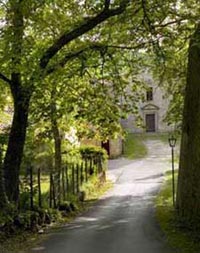 Borgo dell'Eremo and Chiesa di San Marcello |
|||||||||||||||||||||||||||||||||
Vivo d'Orcia - Vivo d'Orcia
|
||||||||||||||||||||||||||||||||||
|
|
||||||||||||||||||||||||||||||||||
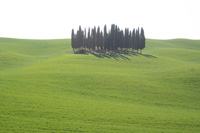 |
 |
|||||||||||||||||||||||||||||||||
Bagni San Filippo
|
||||||||||||||||||||||||||||||||||
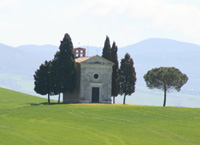 |
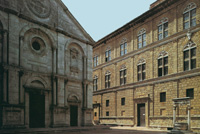 |
 |
||||||||||||||||||||||||||||||||
|
||||||||||||||||||||||||||||||||||
Walking in Tuscany | San Quirico d'Orcia, Bagni Vignoni, Castiglione d'Orcia, Rocca d'Orcia, Montalcino, La Foce
|
||||||||||||||||||||||||||||||||||
Located on the outskirts of Castiglioncello Bandini, Podere Santa Pia offers the quiet tranquility of a private retreat, with numerous attractions and gorgeous small hillside villages only a short drive away. Enjoy the exquisite art, museums and churches in the nearby cities, then relish the cuisine and epic countryside of the Maremma.
|
||||||||||||||||||||||||||||||||||
|
||||||||||||||||||||||||||||||||||


